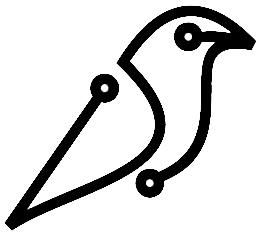A company without an internet presence is unthinkable today. But also more and more private individuals want to express themselves, celebrate their families or share their hobbies with the worldwide community.
There are many different ways to create a website. And there are an array of exceptional, acceptable and unfortunately also inadvisable solutions.
What I really can’t recommend:
- A “for free” website from a provider who sets up subpages like myfamily.blah.com. You get free webspace of course, but you have to ‘pay’ with the lack of a personalized url. Another big downside is that you only have minimal influence on the existence of that url. Additionally, many of those providers insert unwanted ads on your webpages to monetize their website. A website like that looks shabby, indiscriminate, and unprofessional. Today it’s really easy and inexpensive to get your own top level domain. Paying for a domain is a good investment if you’re interested in creating a beautiful, quality website. Once you have a domain, all you need is an offline website tool and you can upload the content yourself.
Partly recommended:
- Website construction kits from the “big” internet providers. Here you need to do some research. The basic settings are usually offered for free, but every extension has to be paid for. Those fees, often due every month, can really add up. Frequently the content on the pages aren’t easy to move, so if you terminate your contract you usually can’t transfer your content to another provider easily. With website construction kits you work with online software. They can be simple to use but the functions are limited too. If you want to realize your own ideas or customize it’s mostly impossible. When it is possible to do something outside the box, you’ll usually need to spend additional money and you will probably require technical support.
- Online website providers: The customer is asked to pay up monthly and is completely at the provider’s mercy. Like the website kits, movement of the pages or changing the provider can be difficult or almost impossible, depending on the software and the provider’s specific site structure. Sometimes you discover subtle, hidden ads, which can be really annoying not just to you but your visitors. In addition you have to be online and logged in for every change you want to make. It can be even more frustrating if you have a slow internet connection or a limited data transfer rate. What may seem like a good deal may ultimately limit what you can do with your website, or become far more expensive than the prices these providers like to advertise.
My favorites:
- So called CMS (Content Management Systems). Here you install a “base frame” with a webspace provider of your choice, add a design, and you as the site owner adds the desired content on your own or with the aid of a web designer. The benefits are obvious: You have your own internet address, the website is designed as requested and you can add content online without any great effort and without damaging the base frame. Most of those systems are “open source” and as a result for free. There are countless free extensions as well. Some of them recommend a link to the author or can be purchased for a nominal fee as a “pro” version that often has extended functionality. The best-known CMS are WordPress and Joomla. Using a CMS is always recommended if the owner wants to update the pages on their own regularly and add new content with only occasional help for the more technical aspects of web design.
- For websites with static content, fewer changes are necessary. You can easily work with an offline system and software with little assistance. The market offers a large variety of static designs, allowing you to configure your website in every detail for a truly custom look.
With both systems you need some knowledge of website design, especially for the first setup. After that, if you use a CMS, your website will need very little upkeep.
